Vinyl liner pools are an affordable inground pool option designed with clean lines and soft colors.
However, vinyl liner swimming pools do have their quirks compared to their fiberglass and concrete cousins.
Understanding how these pools work can help increase the life of their vinyl liner, protecting your investment for years to come.
Note: If you’re curious how this type of pool stacks up against alternatives, check out our full comparison of fiberglass, concrete and vinyl pools.
What Is An Inground Vinyl Liner Pool?
An inground vinyl liner pool is a combination of wall panels, a foundational base, and of course, the vinyl liner.
Once excavation is complete, the wall panels (either steel, aluminum, or polymer) are positioned and attached to each other to form the perimeter of the pool.
A floor is created on top of the soil and the liner is then installed. Air between the wall panels and liner is removed, giving an airtight quality to the liner once the pool is filled with water.
Finishing off the pool are steps/ladders, and coping is also added to transition the pool structure into the deck.
How Is The Pool Floor Made?
There are two types of foundational materials that can be used to make the floor – grout or vermiculite.
Grout (a form of concrete) is made from a mixture of sand, cement, and water. It’s poured using a ready-mix cement truck and then smoothed out.
Vermiculite (a clay-like mineral) is mixed with Portland cement to create a dry mix. Water is then added to it and the resulting material is poured using buckets.
Between the two options, grout is the preferred foundation for a vinyl liner pool. While it hardens faster than vermiculite and requires you to work quickly, the final product is a smoother base which is more durable and less prone to shifting/settling over time.
Are Vinyl Liner Pools Worth It?
With concrete and fiberglass swimming pools also being viable options, is it worth investing your money in a vinyl lined inground model?
Let’s discuss.
What Shapes/Sizes Do They Allow For?
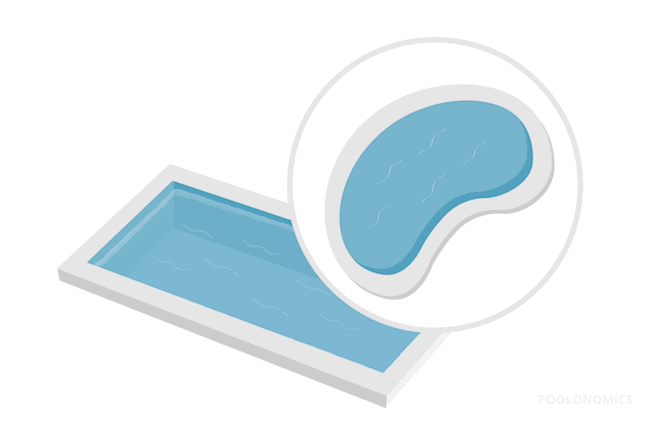
Answer: Fully customizable look.
The majority of vinyl liner pools use a basic rectangular shape for the design.
This is because the panels are manufactured separately and then attached to each other during installation. Manufacturing basic shapes is easier and less expensive than custom-shape panels requiring various bends and curves.
That being said, you can still design a vinyl lined pool to any shape you’d like – be it Roman-inspired, kidney bean, or freeform.
You can also design the depth of the pool to your specification. However, the wall panel height is generally 42 inches tall, which means the shallow end of these pools generally stays around 3.5 feet high.
What Colors/Finishes Do They Allow For?
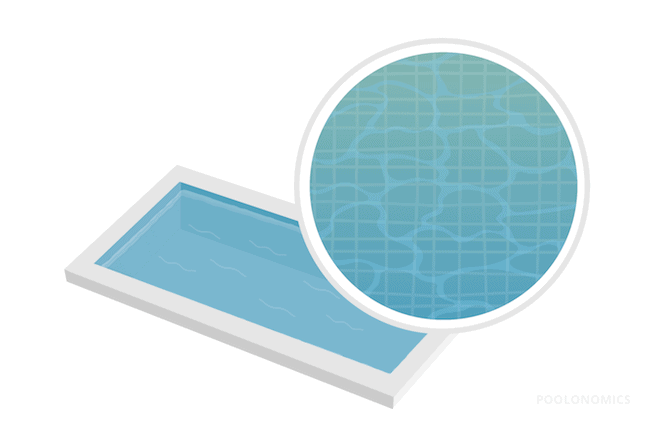
Answer: Various colors in embossed or non-embossed liners.
Vinyl pool liners are categorized as either embossed or non-embossed.
Embossed liners have peaks and valleys in their surface (think of an accordion), varying the thickness for a softer feel. Non-embossed liners are flat and uniformly thick, giving them less cushion under foot.
The thickness of the vinyl plays an integral role in the lifespan of it. Measure in mil (1/1000th of an inch), the most common liner sizes are 20, 27, 28, and 30. The higher the mil number, the thicker and more durable the liner will be.
Liners are mainly sold in blue, but there are various shades you can choose from. Light blue will give the pool water a tropical appearance, whereas dark blue makes the water appear deep, and an aqua tinge will tint the water a turquoise color.
What Other Customizations Do They Allow For?
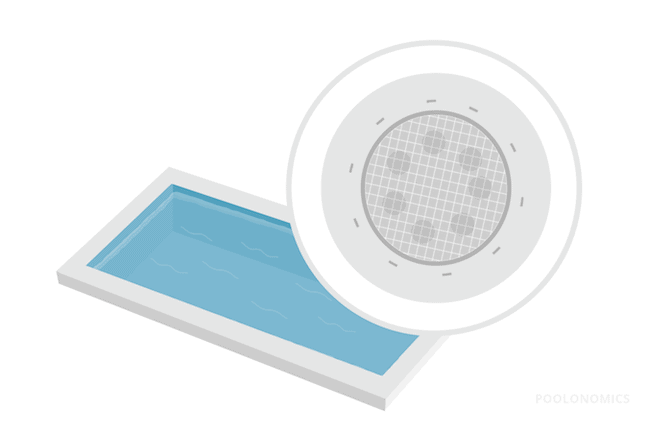
Answer: Customize to your liking.
As you’re building this type of swimming pool from scratch, you can customize virtually every portion of it.
A stepped entry is the preferred design and can be installed with a handrail for added stability. Steps come in two variations – white polymer (easiest to install), or premade vinyl over steps. Installing a ladder in the deep end of the pool will also give you an additional entry/exit (and is a good idea for safety).
If you plan on swimming at night, lights in and around the pool will need to be installed. There’s plenty of models you can choose from, and putting them on timers helps you set them and forget them. Additionally, some lighting systems allow for programmed light shows to add a visual feast for the eyes.
However, nothing will add more flair to your pool than installing water features. These are relatively inexpensive and inventive ways to add dramatic visuals to your outdoor space. Features to choose from include deck jets, waterfalls, spouts, scuppers, statues, fountains, water walls, a slide, or even a grotto.
Also, the pool’s coping, which transitions the pool to the patio deck, can also be customized. Standard coping is white C-channel aluminum (you can change the color), or you have the option of using cantilevered coping, or flat mount coping – all of which will secure the liner in place.
How Do They Feel To The Touch?
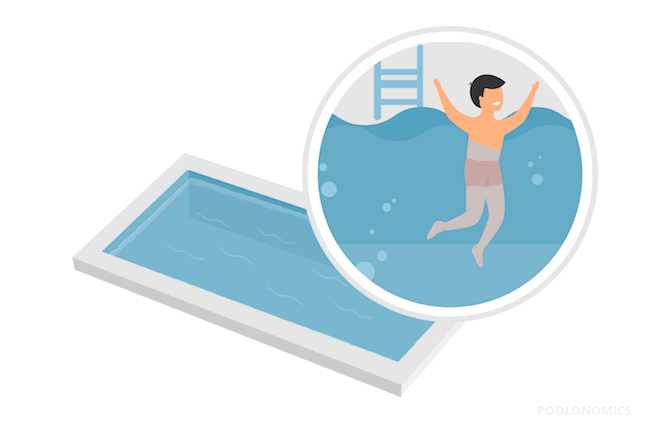
Answer: Varying degrees of soft, squishy, and smooth.
Vinyl is a smooth material, so it stands to reason that it will be smooth under foot and on the walls of the pool.
However, embossed vinyl is more comfortable due to its design. It provides extra softness when walking on steps and swimming in the shallow end of the pool.
How Do They Impact Water Chemistry?
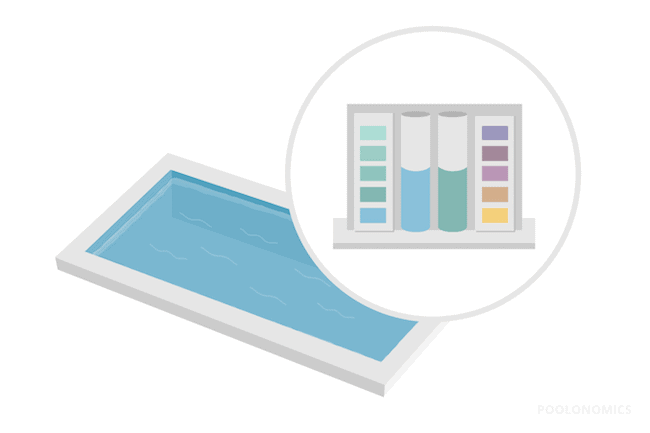
Answer: Little to no issues.
Vinyl liners are a non-porous material. This helps keep the pool water warm, as heat won’t be transferred through liner and out of the pool.
Their smooth surface also helps prevent algae from attaching to the liner and spreading. It is important to understand though, in areas where there’s inadequate circulation (ie. steps, ladders, pool lights) algae blooms can arise if not thoroughly cleaned.
Also of note, if you’re thinking of getting a vinyl-lined saltwater pool, ensure you construct it from polymer panels. If you use aluminum or steel for the structure, the salt will corrode the metal and you’ll have a huge problem on your hands.
How Easy Are They To Maintain?
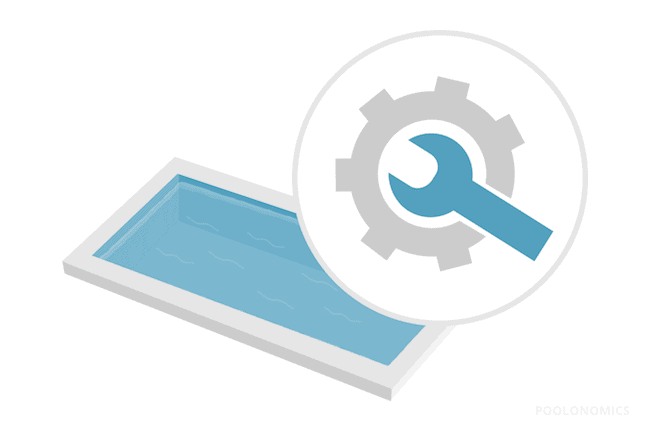
Answer: Need regular cleaning.
Following a maintenance schedule will not only keep the pool clean, but it will prolong the life of the liner. This includes using a skimmer net for surface debris, a vacuum specific for use on vinyl, and a soft brush for using on the walls, steps, and pool floor.
A cleaning solution formulated for vinyl pools should be used on the liner, and extra attention should be paid to the waterline. This area is prone to grimey buildup and oily deposits which can break down the vinyl when combined with sunlight.
Of importance, you should never fully drain a vinyl liner pool unless you’re doing so to replace the liner. This is because the water pressure holds the liner in place against the walls and floor.
When the water is drained, a used liner will be stretched out and no longer airtight. As air can now get between the liner and the pool walls, refilling the pool will cause the liner to bubble up or wrinkle.
Additionally, draining a vinyl pool can potentially lead to the structure popping out of the ground, which can be catastrophic.
How Long Do They Usually Last?
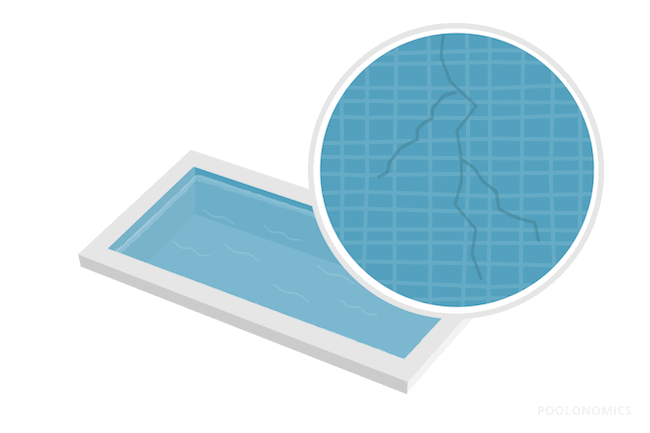
Answer: 30+ years for the structure, 5-10 years for the liner
As long as the structure is well built, you should get at least 30 years of use from the pool.
When it comes to the liner, this will need replacing anywhere from 5 to 10 years on average. However, there are some people who can stretch that beyond a decade by taking measures to avoid liner damage.
Liner damage can occur when the water chemistry is unbalanced (ie. low pH level), through improper cleaning methods, or if someone accidentally punctures it.
Thicker liners are better at withstanding punctures, but they aren’t impervious to them. If you do get a hole, an underwater patch kit will be needed to quickly repair it so the leak doesn’t damage the foundation or pool structure.
How Easy Are They To Install?
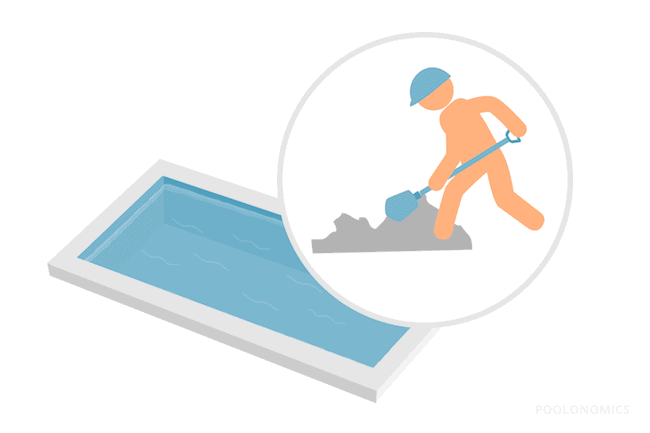
Answer: Install time of 1 to 2 months.
Installing a vinyl lined inground pool is relatively quick, taking anywhere from 4 to 8 weeks. This makes it faster than the multi-month install time for a concrete pool, but not as quick as only a few weeks for a fiberglass pool.
The question of how easy they are to install depends on the pool size and shape, as well as any additional features it has designed into it — though a basic rectangular vinyl pool is relatively easy to install.
An oversized freeform model with multiple water features, and a tanning ledge with vinyl over steps is going to be a bit more involved.
How Much Do They Cost?
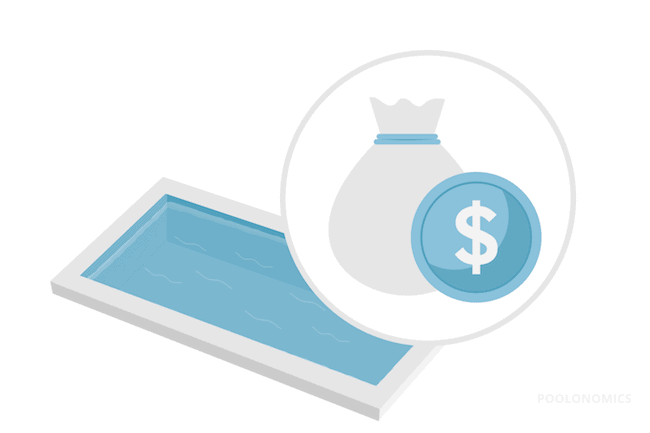
Answer: The least expensive pool option starting at $25,000.
Vinyl pools have a low upfront cost, starting at $25,000, with the average price being between $30,000 and $35,000.
The trade off of this lower price is that the liner needs to be replaced every 5-10 years, costing upwards of $5,000 each time. This covers the liner, labor, and refilling the pool with water and chemicals.
Additionally, the thicker, more puncture-resistant liners rated at 30 mil are more expensive than the economic option of a 20 mil liner.
if you don’t mind getting your hands dirty, it’s also worth noting that DIY vinyl liner pool kits are available at around $5,000 to $10,000.
Vinyl Lined: Is It Worth It?
If you’re not looking for anything too fancy, vinyl liner inground swimming pools have the cheapest initial cost out of the 3 pool styles.
However, they do require a somewhat large financial upkeep every few years when the liner needs replacing. As technology advances, and pool construction evolves, it’s getting harder to justify investing in this type of pool, when the fiberglass option is now on the table.
The additional upfront cost of fiberglass isn’t unreasonable, not to mention they look nicer, are easier to take care of, and will have potentially less problems down the line.
